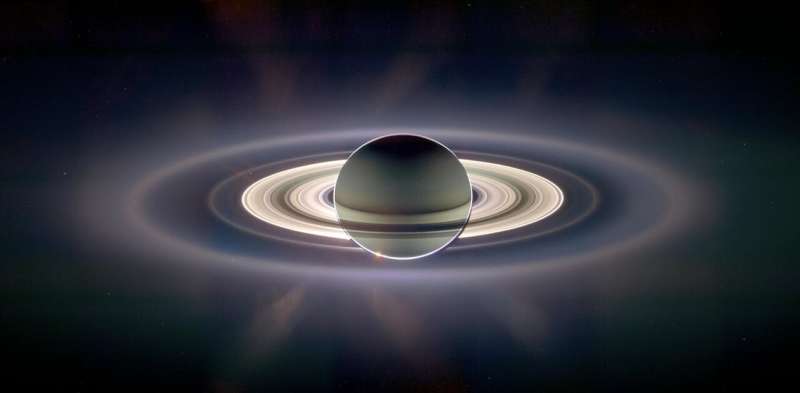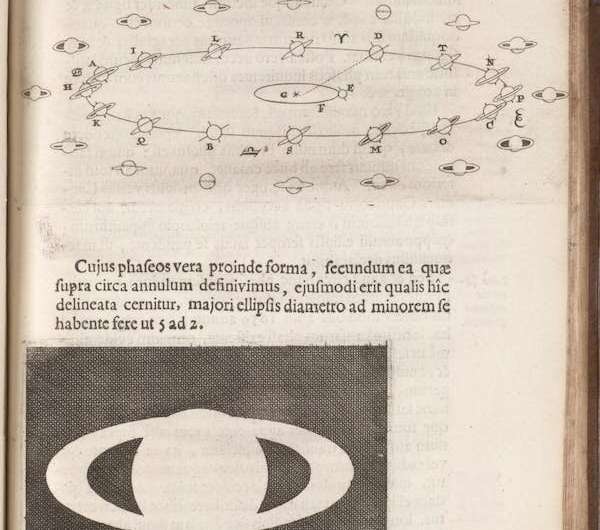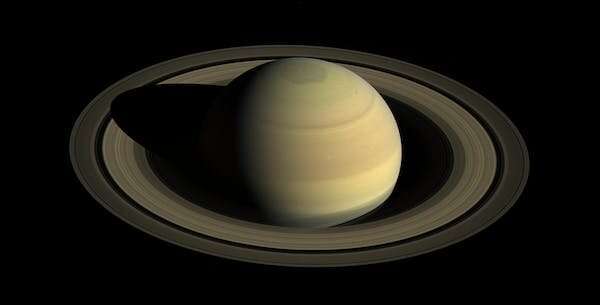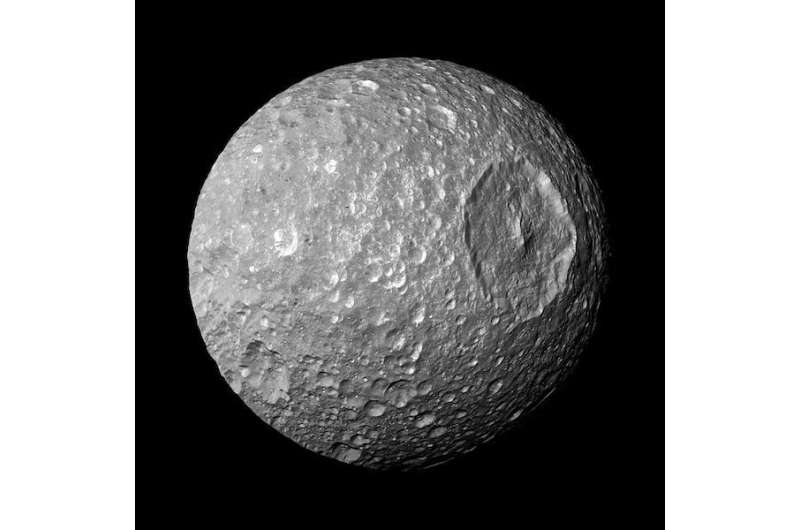This article has been reviewed according to Science X's editorial process and policies. Editors have highlighted the following attributes while ensuring the content's credibility:
fact-checked
peer-reviewed publication
trusted source
written by researcher(s)
proofread
Saturn: We may finally know when the magnificent rings were formed

Saturn's rings are one of the jewels of the solar system, but it seems that their time is short and their existence fleeting.
A new study
suggests the rings are between 400 million and 100 million years old—a fraction of the age of the solar system. This means we are just lucky to be living in an age when the giant planet has its magnificent rings. Research also reveals that they could be gone in another 100 million years. The rings were first observed in 1610 by the astronomer Galileo Galilei who, owing to the resolution limits of his telescope, initially described them as two smaller
In 1659, the Dutch astronomer Christiaan Huygens published Systema Saturnium, in which he became the first to describe them as a thin, flat ring system that was not touching the planet.
He also showed how their appearance, as viewed from Earth, changes as the two planets orbit the Sun and why they seemingly disappear at certain times. This is due to their viewing geometry being such that we on Earth periodically see them edge-on.
The rings are visible to anyone with a decent pair of binoculars or a modest back garden telescope. Cast white against the pale yellow orb of Saturn, the rings are composed almost entirely of billions of particles of water ice, which shine by scattering sunlight.

Amid this icy material are deposits of darker, dusty stuff. In space science, "dust" usually refers to tiny grains of rocky, metallic, or carbon-rich material that is noticeably darker than ice. It is also collectively referred to as micrometeoroids. These grains permeate the solar system.
Occasionally, you can see them entering the Earth's atmosphere at night as shooting stars. The gravitational fields of the planets have the effect of magnifying or focusing this dusty, planetary "in-fall".
Over time, this in-fall adds mass to a planet and alters its chemical composition. Saturn is a massive gas giant planet with a radius of some 60,000km, about 9.5 times that of Earth, and a mass of about 95 times that of Earth. This means it has a very large "gravity well" (the gravitational field surrounding a body in space) that is very effective at funneling the dusty grains towards Saturn.
Collision course
The rings extend from some 2,000km above Saturn's cloud tops to about 80,000km away, occupying a large area of space. When in-falling dust passes through, it can collide with icy particles in the rings. Over time, the dust gradually darkens the rings and adds to their mass.
Cassini-Huygens was a robotic spacecraft launched in 1997. It reached Saturn in 2004 and entered orbit around the planet, where it stayed until the end of the mission in 2017. One of the instruments aboard was the Cosmic Dust Analyzer (CDA).

Using data from the CDA, the authors in the new paper compared the current dust counts in space around Saturn with the estimated mass of dark dusty material in the rings. They found that the rings are no older than 400 million years and may be as young as 100 million years. These may seem like lengthy time scales, but they are less than one-tenth of the 4.5 billion-year age of the solar system.
This also means that the rings did not form at the same time as Saturn or the other planets. They are, cosmologically speaking, a recent addition to the solar system. For over 90% of Saturn's existence, they were not present.
Death Star
This leads to another mystery: how did the rings first form, given that all of the solar system's major planets and moons formed much earlier? The total mass of the rings is estimated to be about half as much as one of Saturn's smaller icy moons, many of which exhibit enormous impact features on their surfaces.
One in particular, the little moon Mimas, which is nicknamed the Death Star, has a 130km-wide impact crater called Herschel on its surface.
This is by no means the largest crater in the solar system. However, Mimas is only about 400km across, so this impact would not have needed much more energy to obliterate the moon. Mimas is made of water-ice, just like the rings, so it's possible that the rings were formed from just such a cataclysmic impact.

Ring rain
However they formed, the future of Saturn's rings is in little doubt. The impact of the dust grains against the icy particles happens at very high velocities, leading to tiny fragments of ice and dust getting chipped away from their parent particles.
Ultra-violet light from the Sun causes these fragments to become electrically charged via the photo-electric effect. Like the Earth, Saturn has a magnetic field, and once charged, these tiny icy fragments are released from the ring system and trapped by the planet's magnetic field.
In concert with the gravity of the giant planet, they are then funneled down into Saturn's atmosphere. This "ring rain" was first observed from afar by the Voyager 1 and Voyager 2 spacecraft during their brief Saturn flybys in the early 1980s.
In a more recent paper from 2018 scientists used dust counts, again from the CDA, as Cassini flew between the rings and Saturn's cloud tops, to work out how much ice and dust is lost from the rings over time. This study demonstrated that about one Olympic-sized swimming pool of mass from the rings is lost into Saturn's atmosphere every half-hour.
This flow rate was used to estimate that, given their current mass, the rings will probably be gone in as little as 100 million years. These beautiful rings have a turbulent history, and unless they are somehow replenished, they will be gobbled up by Saturn.
More information: Sascha Kempf et al, Micrometeoroid infall onto Saturn's rings constrains their age to no more than a few hundred million years, Science Advances (2023). DOI: 10.1126/sciadv.adf8537
Journal information: Science Advances
Provided by The Conversation
This article is republished from The Conversation under a Creative Commons license. Read the original article.![]()




















